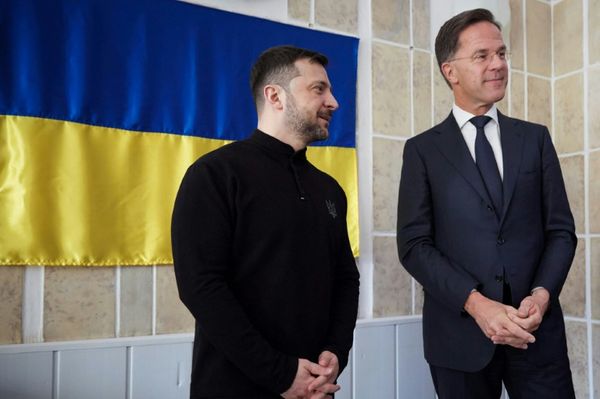Attorney General Merrick Garland has released Volume I of Jack Smith's report, which focuses on the January 6 prosecution of Trump. Smith addresses one of the lingering questions: why did he not charge Trump with violating the federal insurrection statute (18 U.S.C. § 2383). In early 2021, Seth Barrett Tillman and I wrote an article anticipating a prosecution based on Section 2283, but that case would never come.
First, Smith explains that there was no clear definition under federal law for an "insurrection." He acknowledges that the Colorado Supreme Court found that the attack on the Capitol was an insurrection as that term was used in Section 3. Likewise, some federal courts in D.C. described the attacks as an insurrection. "These cases, however, did not require the courts to resolve the issue of how to define insurrection for purposes of Section 2383, or apply that definition to the conduct of a criminal defendant in the context of January 6."
During the Section 3 debates, Will Baude, Mike Paulsen, and many others, thought it was perfectly clear what an insurrection was, and that January 6 was clearly an insurrection. Smith did not think the issue was so clear. Seth Barrett Tillman and I also did not take a position on this question.
Second, Smith did not think there was enough authority to distinguish an insurrection from a riot:
The Office recognized why courts described the attack on the Capitol as an "insurrection," but it was also aware of the litigation risk that would be presented by employing this long-dormant statute. As to the first element under Section 2383-proving an "insurrection against the authority of the United States or the laws thereof'-the cases the Office reviewed provided no guidance on what proof would be required to establish an insurrection, or to distinguish an insurrection from a riot.
Third, Smith recognized that an insurrection usually involves an attempt to overthrow a sitting government, but on January 6, Trump was President of that government.
In case law interpreting "insurrection" in another context, one court has observed that an insurrection typically involves overthrowing a sitting government, rather than maintaining power, which could pose another challenge to proving beyond a reasonable doubt that Mr. Trump's conduct on January 6 qualified as an insurrection given that he was the sitting President at that time. . . . The Office did not find any case in which a criminal defendant was charged with insurrection for acting within the government to maintain power, as opposed to overthrowing it or thwarting it from the outside. Applying Section 2383 in this way would have been a first, which further weighed against charging it, given the other available charges, even if there were reasonable arguments that it might apply.
In November 2023, Rob Leider argued that the President cannot commit an insurrection against the government he leads. Smith seems to have approached the issue similarly.
In response to @WilliamBaude and Michael Paulsen's article "The Sweep and Force of Section Three" (https://t.co/y4ugy7bjiC), a blog post raising a legal question about whether a president is legally capable of committing an "insurrection."
— Robert Leider (@LeiderRob) November 16, 2023
Fourth, Smith finds there was insufficient evidence to show that Trump personally engaged in insurrection, but there was evidence that he gave aid and comfort to an insurrection:
As to the second element under Section 2383, there does not appear to have ever been a prosecution under the statute for inciting, assisting, or giving aid or comfort to rebellion or insurrection. The few relevant cases that exist appear to be based on a defendant directly engaging in rebellion or insurrection, but the Office's proof did not include evidence that Mr. Trump directly engaged in insurrection himself.
The Colorado trial court, and the Colorado Supreme Court found that Trump personally engaged in insurrection.
¶196 The question remains whether the record supported the district court's finding that President Trump engaged in the January 6 insurrection by acting overtly and voluntarily with the intent of aiding or furthering the insurrectionists' common unlawful purpose. Again, mindful of our applicable standard of review, we conclude that it did, and we proceed to a necessarily detailed discussion of the evidence to show why this is so. Anderson v. Griswold, 2023 CO 63, ¶ 196, 543 P.3d 283, 332 (2023).
Jack Smith expressly disagrees with this claim. Again, Smith is not talking about whether the evidence was sufficient to demonstrate proof beyond a reasonable doubt. He said the record "did not include evidence," full stop.
Fifth, Smith writes that Trump may have given aid and comfort to an insurrection (assuming there was an insurrection.)
Thus, however strong the proof that he incited or gave aid and comfort to those who attacked the Capitol, application of those theories of liability would also have been a first.
Section 2383 permits a finding for liability if one "engages in any rebellion or insurrection against the authority of the United States or the laws thereof, or gives aid or comfort thereto." In other words, it is an offense to give "aid or comfort" to an "insurrection." Jack Smith thought he could convict Trump on this charge, assuming January 6 was an insurrection.
By contrast, Section 3 applies when one "shall have engaged in insurrection or rebellion against the same, or given aid or comfort to the enemies thereof." Baude and Paulsen argued that Trump gave "aid and comfort" to an insurrection. But the text does not support such a claim. Seth and I explained in Sweeping and Forcing:
Yet, Baude and Paulsen conflate "engaged in insurrection," a direct and substantive criminal law offense, with giving "aid or comfort" to enemies, which permits liability based on indirect and inchoate wrongs. And in the process, they constructed a new offense that does not appear in the text of Section 3: giving aid or comfort to insurrection. The text of Section 3's "engage" prong does not extend to wrongs and crimes that are inchoate or indirect. Nor does the "engage" prong extend to inaction—for example, failing to take action with regard to an insurrection or rebellion.
Smith has rejected the core of how Baude and Paulsen understood the substantive offense under Section 3.
Sixth, Smith describes the difficult First Amendment issues with charging Trump for inciting an insurrection. Remember, almost all of the evidence would have included tweets, political speech, and otherwise-protected expression:
Thus, however strong the proof that he incited or gave aid and comfort to those who attacked the Capitol, application of those theories of liability would also have been a first. See Alexander Tsesis, Incitement to Insurrection and the First Amendment, 57 WAKE FOREST L. REV. 971, 973 & n.6 (2022) ("The likelihood of conviction under the federal incitement to insurrection statute, 18 U.S.C. § 2383 … is fraught with uncertainty because no federal court has interpreted it."). 65
In the wake of January 6, I raised some of the difficult First Amendment issues that would affect the second Trump impeachment trial. Smith seems to have been concerned by these issues:
The Office determined that there were reasonable arguments to be made that Mr. Trump's Ellipse Speech incited the violence at the Capitol on January 6 and could satisfy the Supreme Court's standard for "incitement" under Brandenburg v. Ohio, 395 U.S. 444,447 (1969) (holding that the First Amendment does not protect advocacy "directed to inciting or producing imminent lawless action and … likely to incite or produce such action"), particularly when the speech is viewed in the context of Mr. Trump's lengthy and deceitful voter-fraud narrative that came before it. For example, the evidence established that the violence was foreseeable to Mr. Trump, that he caused it, that it was beneficial to his plan to interfere with the certification, and that when it occurred, he made a conscious choice not to stop it and instead to leverage it for more delay. But the Office did not develop direct evidence-such as an explicit admission or communication with co-conspirators-of Mr. Trump's subjective intent to cause the full scope of the violence that occurred on January 6. Therefore, in light of the other powerful charges available, and because the Office recognized that the Brandenburg standard is a rigorous one, see, e.g., NA.A.CF v. Claiborne Hardware Co., 458 U.S. 886, 902, 927-929 (1982) (speech delivered in "passionate atmosphere" that referenced "possibility that necks would be broken" and violators of boycott would be "disciplined" did not satisfy Brandenburg standard); Brandenburg, 395 U.S. at 446-447 (reversing conviction where Ku Klux Klan leader threatened "revengeance" for "suppression" of the white race), it concluded that pursuing an incitement to insurrection charge was unnecessary.
Once again, the Colorado Supreme Court easily found that Trump's speech was not protected by the First Amendment. And it did so based on a record developed 1,600 miles from the nation's capitol, without any access to detailed investigations and internal DOJ deliberations.
President Trump contends that his speech on January 6 was protected by the First Amendment and, therefore, cannot be used to justify his disqualification from office under Section Three. The district court concluded that this speech was unprotected by the First Amendment. Anderson, ¶ 298. We agree with the district court.
Anderson v. Griswold, 2023 CO 63, ¶ 226 (2023).
In light of Smith's report, the Colorado Supreme Court's proceedings, and many of the arguments raised in that case, have not aged well.
The post Jack Smith Explains Why He Did Not Charge Trump With Insurrection appeared first on Reason.com.







